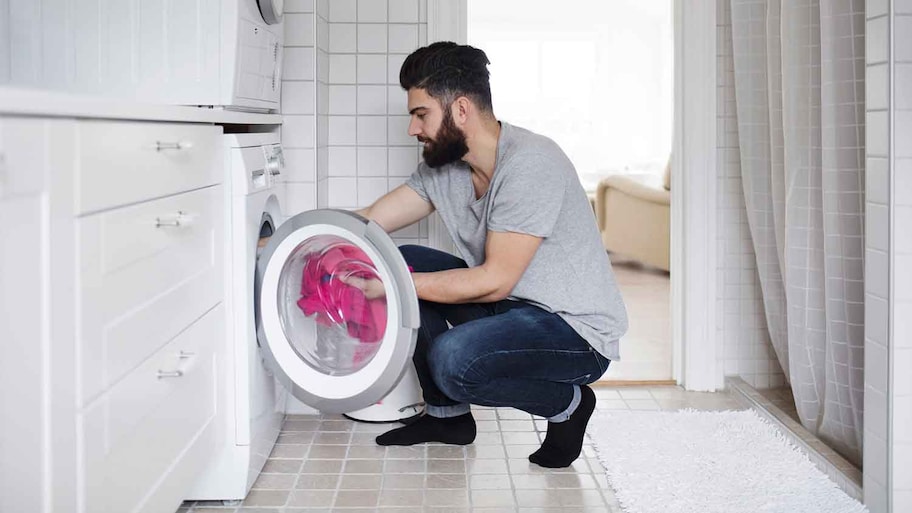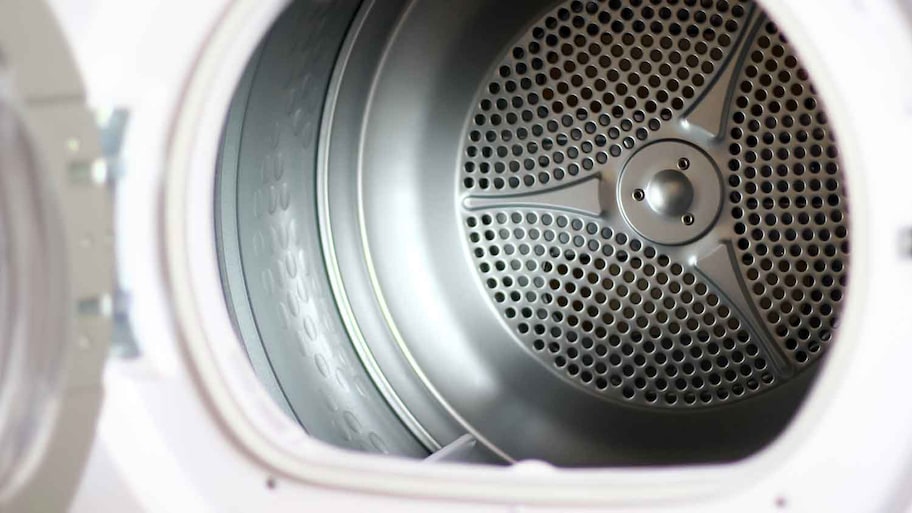Why Is My Dryer Squeaking? Troubleshooting and Solutions
A fixable (but annoying) problem to have


Highlights
Sometimes a bit of lubrication is all you need to stop the squeaking.
Other times, you’ll need to replace parts like the dryer belt.
Before replacing parts, make sure you buy the exact kind your model needs.
A dryer is an essential appliance in any household, making laundry chores much more convenient. However, a squeaking dryer can quickly turn a routine task into a noisy nuisance. If you’re scratching your head, wondering why the dryer is squeaking, then you’re in luck. Understanding the reasons behind the squeaks can help you take the appropriate steps to address the issue and restore peace to your laundry room. Let’s explore the common culprits of a squeaking dryer and go over the next steps to help you get your appliance back in working order—however, you do always have the option to outsource these repairs to a dryer repair professional near you.
1. Worn Out Drum Support Rollers
Drum support rollers play a vital role in keeping your dryer drum spinning smoothly. As the drum rotates, these rollers facilitate its movement, ensuring efficient drying. Over time, these components can wear out due to friction and usage, leading to that frustrating squeaking noise that interrupts your laundry routine and might raise concerns about your dryer's well-being.
Sound: A rhythmic squeak that coincides with each rotation of the drum.
Severity: This is a moderate issue. Ignoring it could result in increased wear on the dryer belt and other components, potentially leading to more extensive repairs or even a breakdown of the machine.
Next steps: Check the drum support rollers for signs of wear, such as flattening or excessive movement. It can be hard to know if you should repair or replace a part of an appliance. In this case, to resolve the problem, you need to replace the worn-out rollers with compatible replacements designed for your specific dryer model.
2. Faulty Idler Pulley
While the idler pulley might not be the most well-known part of a dryer, it serves a critical purpose by maintaining tension on the dryer belt. This pulley keeps the belt appropriately taut, allowing the drum to rotate smoothly. When this component malfunctions, it can cause that bothersome high-pitched squeal that echoes through your laundry room, alerting you to its distress.
Sound: A high-pitched squeal, which might vary in intensity.
Severity: This issue is a bit more serious and, depending on how far gone it is, can range from moderate to high severity. If left untreated, a faulty idler pulley can cause the dryer belt to break, leaving you with an inoperable appliance until the issue is resolved.
Next steps: Inspect the idler pulley for any wobbling, improper tension, or unusual noise. If you identify issues, consider replacing the idler pulley promptly to prevent further damage and ensure the proper functioning of your dryer.
3. Dryer Belt Problems

The dryer belt is an integral part of the dryer's operation, connecting the motor pulley to the drum. As the motor turns, the belt moves the drum, enabling the drying process. When the belt experiences issues, such as wear, misalignment, or damage, it can lead to that persistent rubbing or squealing noise that disrupts your laundry routine and raises questions about your dryer's reliability.
Sound: A continuous rubbing or squealing noise.
Severity: The good news is, this issue isn’t all that severe unless you don’t act on it. Failing to address belt problems could result in the belt breaking, causing the drum to stop rotating and rendering the dryer unusable.
Next steps: Begin by unplugging the dryer, then carefully examine the belt for signs of fraying, misalignment, or excessive wear. If you spot any problems, replace the belt following the guidelines provided by your dryer's manufacturer.
4. Lack of Lubrication
Just like any machinery, dryers require proper lubrication to keep their moving parts functioning smoothly. Adequate lubrication minimizes friction and ensures that components work harmoniously. When lubrication is lacking, those intermittent squeaks can become quite noticeable, disrupting your peaceful laundry time and prompting you to investigate the source.
Sound: Intermittent squeaks that may vary in pitch.
Severity: Although not an immediate threat, inadequate lubrication can accelerate wear on moving parts, potentially leading to more significant issues over time.
Next steps: Consult your dryer's manual to identify components that require lubrication. Apply the recommended lubricant as directed to ensure smoother operation and reduce the occurrence of squeaks.
5. Malfunctioning Blower Wheel
The blower wheel is responsible for circulating hot air through your dryer, crucial for effective drying. As the wheel turns, it propels air into the drum, contributing to the drying process. When it malfunctions, it can produce an unmistakable squeaking sound, signaling a need for attention to ensure your laundry dries efficiently and quietly.
Sound: A rhythmic or continuous squeak that accompanies the rotation of the blower wheel.
Severity: We’d call a malfunctioning blower wheel a moderate dryer issue. A malfunctioning blower wheel can disrupt the drying process and potentially overheat the dryer, leading to more extensive damage.
Next steps: If you suspect the blower wheel is the culprit, unplug the dryer and inspect the wheel for any damage or foreign objects. If necessary, replace the blower wheel with the appropriate replacement part.
6. Damaged Drum Bearing
The drum bearing supports the back of the dryer drum and plays a crucial role in maintaining the drum's stability during operation. As clothes tumble inside the drum, the bearing ensures smooth rotation. Over time, the bearing can wear out, become damaged, or lose lubrication, resulting in a distinctive squeaking noise that grabs your attention and hints at the underlying issue.
Sound: Continuous or intermittent squeaking that corresponds with the rotation of the drum.
Severity: Ignoring a damaged drum bearing can lead to increased friction, potential overheating, and further damage to the drum and surrounding components. Which makes this a moderate to highly severe issue you need to fix.
Next steps: Unplug the dryer and examine the drum bearing for signs of wear or damage. Depending on the severity, you may need to replace the bearing or seek professional assistance.
